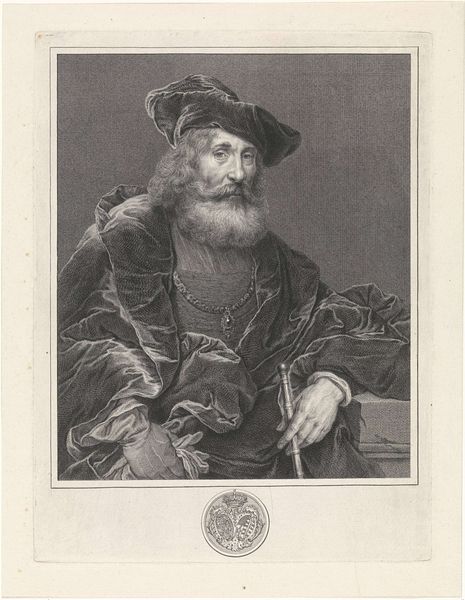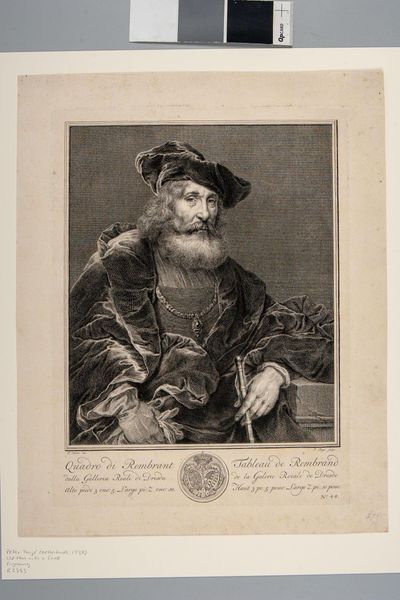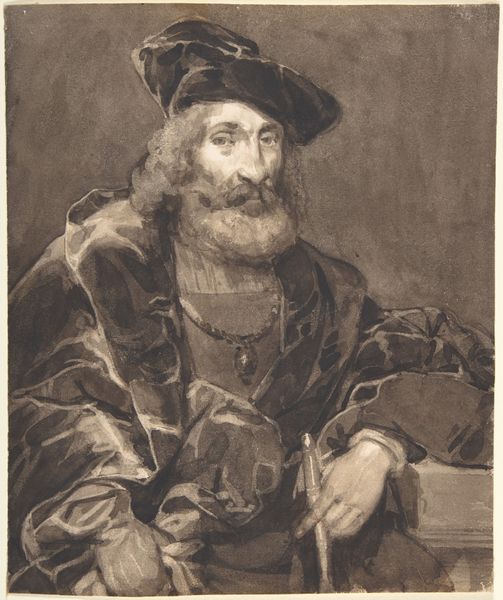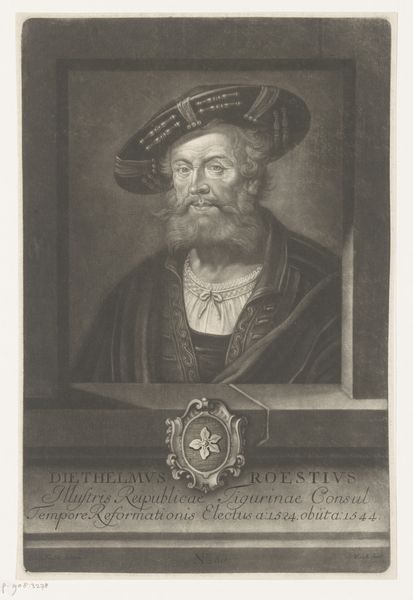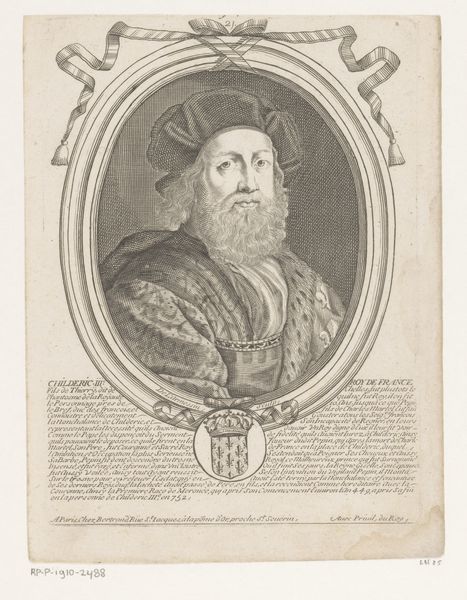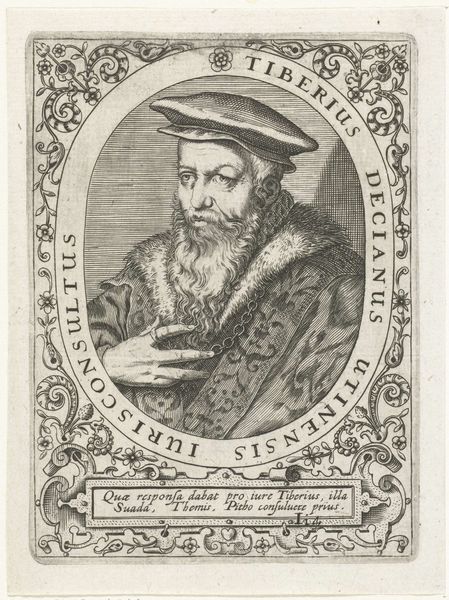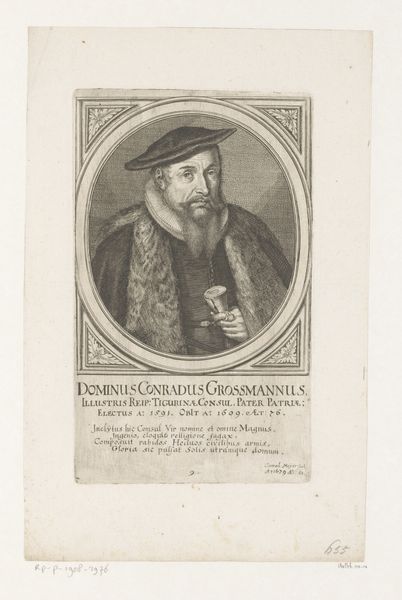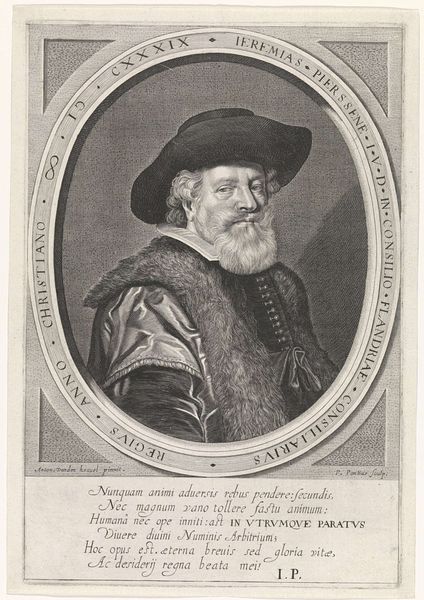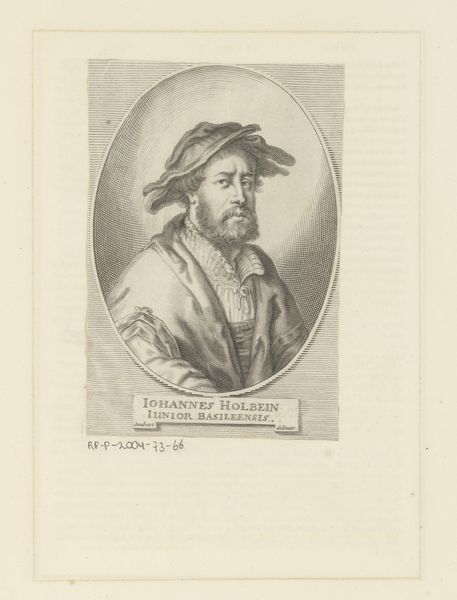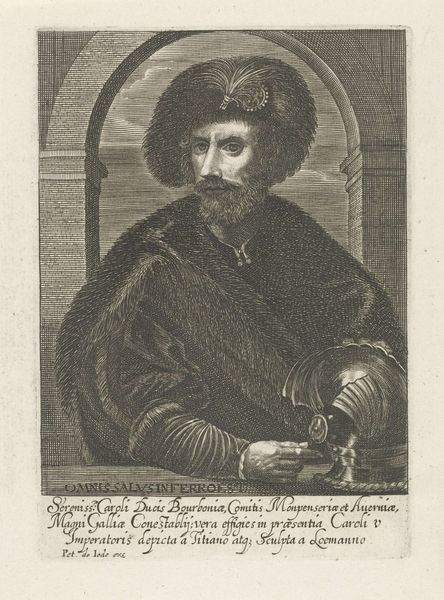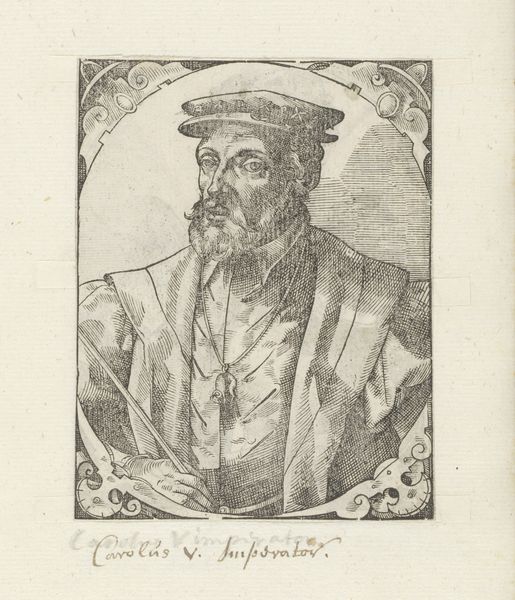
Copyright: CC0 1.0
Curator: Pieter Tanjé's "Old Man with a Cane," presents an intriguing figure rendered with meticulous detail. Editor: There's a weariness in the man's gaze, a stoic acceptance etched onto his face. The cane feels less like a support and more like a symbol of burdens carried. Curator: Given the printmaking process, likely etching or engraving, the lines create a velvety texture, especially evident in the drapery of his coat. It speaks to Tanjé's skill in translating tonal variations into linear marks. Editor: I wonder about the man's social standing. Is he a merchant, a scholar, or simply a member of the artisan class? His clothing suggests a degree of comfort, but also perhaps a life lived in service to others. Curator: The social function of printmaking allowed for broader distribution of imagery; this work would have been consumed by a wide range of viewers. It is important to understand the means of production and how it affected viewership. Editor: Absolutely. And perhaps this accessibility helped to shape or reinforce societal perceptions of aging and masculinity in his time. The reproduction of Rembrandt's portraits also speaks to questions of labor. Curator: Precisely. It’s a testament to the enduring appeal of the subject and of this artistic practice, isn’t it? Editor: Indeed. It invites us to consider not just the image, but also the networks of production and consumption that brought it into being.
Comments
No comments
Be the first to comment and join the conversation on the ultimate creative platform.
